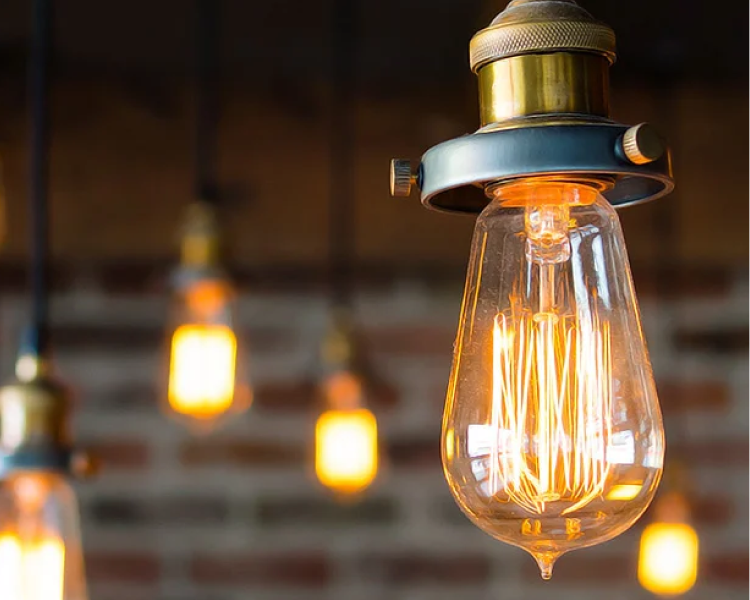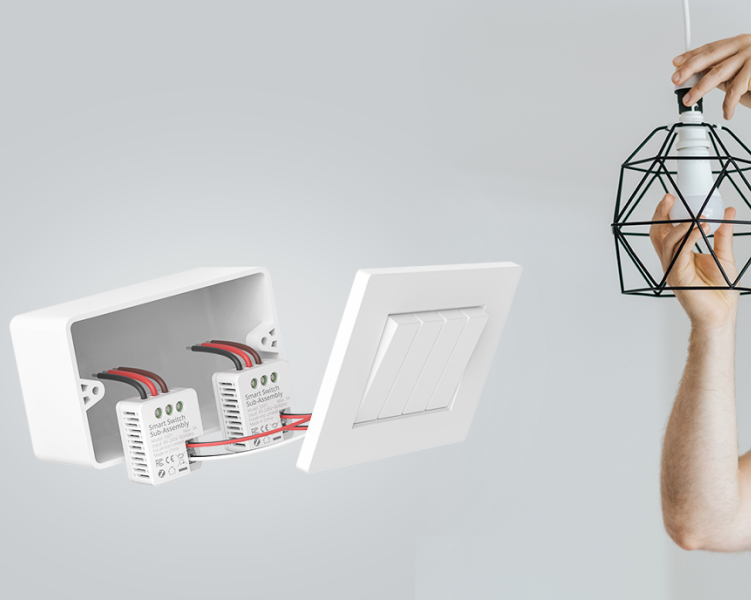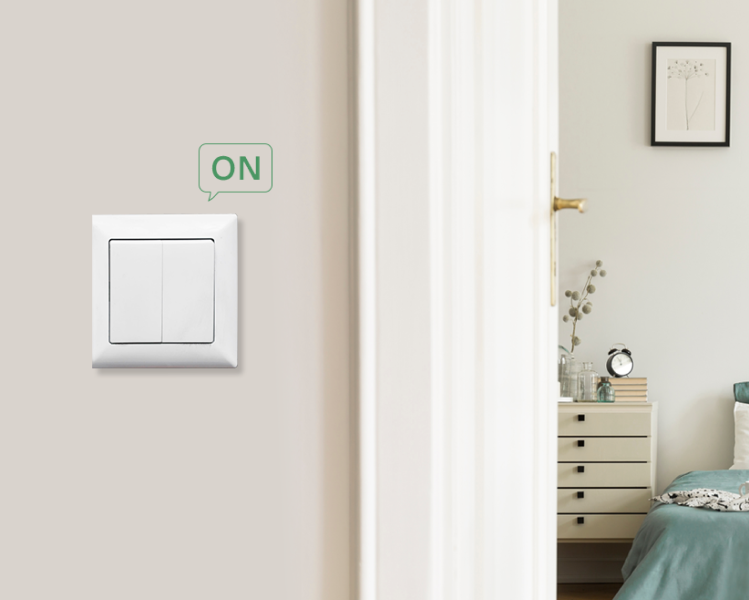EVVR内リレースイッチの導入
EVVRスマートスマートインウォールリレースイッチは、古い住宅や商業ビルと完全に機能する非常に中立的なワイヤースマートリレースイッチです。家の既存のコンポーネントをアップグレードしてインストールする必要はありません。

EVVRインウォールリレースイッチ 含む スマートリレー およびスマートスイッチサブアセンブリ。スマートリレーは、ランプの近くに設置することをお勧めします。これは、最小負荷を必要とせずに電球、白熱、ハロゲン、蛍光、およびLED電球をサポートし、100%Flickerフリーです。スマートスイッチは壁のスイッチの後ろに取り付けられており、ニュートラルワイヤは必要ありません。さらに、スマートスイッチのサイズは非常にコンパクトです。 2つのスマートスイッチは、ほとんどの電気ボックスに収まり、最大4杯の壁スイッチをサポートできます。

また、2部構成のデバイスであるにもかかわらず、メカニカルスイッチを制御する必要がない場合は、サブアセンブリを実際にインストールする必要はありません。 それでも、このようにして、機械式スイッチからライトをオフにした後、WiFi接続が中断されないことをお勧めし、ネットワークコマンドを介してライトを制御し続けることができます。 そして、私はこれがスマート電球で一般的な出来事であることを知っています。
EVVRは、ハードワイヤードソリューションを設計しました。 これは、接続が中断されないことを意味します。インターネットがなくなったときに、機械式の壁スイッチからライトのオン/オフを引き続きオン/オフにすることができます。
スマートリレーのパッケージを開くと、両面フォームパッド、取扱説明書、スマートリレーデバイスが表示されます。次に、スマートスイッチサブアセンブリのボックスを開くと、2つのパネルコネクタワイヤ、スマートスイッチ取扱説明書、スマートスイッチデバイスが表示されます。 我々は持っています HomeKit, Zigbee、およびZ-Waveバージョン.

ここでは、1つのスマートスイッチサブアセンブリと1つのスマートリレーを含む単一のスイッチキットが必要です。 ホームキットバージョン インストール用。
インストール前の準備
まず第一に、これらのデバイスのすべてのインストールは、資格のあるまたはライセンスされた電気技師が実行する必要があることに注意してください。また、電気設備のための地元のガイドラインと法律に従ってください。
壁のリレースイッチを設置する前に、ブレーカーまたは電気サービスパネルで電源がオフになっていることを確認する必要があります。

そして、これらのツールを準備する方が良いでしょう。
- 電圧テスター
- ケーブルカッター
- ドライバー

スマートスイッチをインストールする方法
電源がオフになっていることを確認したら、インストールを設定できます。 2つのコンポーネント間に標準のインストールシーケンスはありません。ただし、ここでは、最初にSmart Switchサブアセンブリ(スマートスイッチパーツ)をインストールします。
壁のスイッチからフェイスプレートを取り外します。 ご覧のとおり、ヨーロッパの標準配線があります。
ライブワイヤは茶色で、荷重は黒く、接地ワイヤーは緑色です。 ただし、標準のカラーコードは地域ごとに異なります。
安全またはワイヤーの色がわからない場合は、電源をオンにして電圧テスターを介して検証します。スイッチをオンまたはオフにするかどうかを通して常に電流がある場合、それはライブワイヤーです。スイッチがオフになっているときに他のワイヤを通過する電流はありません。
次に、電源をオフにして続行します。

これで、ライブワイヤを上部のLコネクタに接続し、荷重ワイヤを上部の「L1」コネクタに接続できます。

そして、パネルコネクタワイヤの1つを使用して、荷重のSW1外部スイッチ制御に挿入し、白/赤いワイヤーを「L1」に接続し、ブラックワイヤーを採用した壁のスイッチの「L」端子に接続できます。それぞれ壁から。

次に、スマートスイッチのインストールを完了し、ボックスに戻します。
EVVRスマートリレーのインストール方法
次に、スマートリレーのインストールを開始できます。スマートリレーをランプの近くに設置することをお勧めします。スマートリレーの取扱説明書によく輝く配線図を見つけることができます。
照明器具のカバーを取り外すことから始めることができます。
電球に行く2つのワイヤを取り外します。 ライブワイヤを上部のL端子に接続し、ニュートラルワイヤを最初のN端子に接続します。 ネジを固定します。 そして、ライブワイヤをライトからOUT端子に接続し、 光からのニュートラルワイヤ 残り/2番目のnポートに。

これで、電力をオンにして、ワイヤが正しく接続されているかどうかを確認できます。 ワイヤが適切に接続されている場合は、壁のスイッチをオンにし、スイッチに接続されたライトがオンになっている間にインジケータライトが点灯します。
これで、インストールが終了しました。 QRコードをスキャンして、スマートリレーをネットワークに設定します。ネットワークに壁のリレースイッチZigbeeまたはZ-Waveモデルを追加するための独自のZigbee 3.0またはZ-Wave Gatewaysの指示に従ってください。
これで、携帯電話と元の機械式壁スイッチから同時にライトを制御できます。また、記事の冒頭で述べたように、壁のスイッチをオフにしたとしても、ネットワークコマンドを介して携帯電話からのライトを制御することができます。
最後に、付属の両面テープまたはネジを使用してスマートリレーを固定し、照明器具を元に戻すことができます。
次に、さらにステップを踏み出し、スマートリレーパーツをライトグループにインストールする方法を示します 1つの機械的な壁スイッチに接続されています。
2つあります 方法 つながるスマートリレーをインストールします 2つの異なる制御エクスペリエンス.
- で1つのスマートリレーのみを接続できます パラレル接続スポット このようにして、ライトグループの中で、ライトグループのすべてのライトを、ボイスコントロールを介して、または機械的な壁スイッチを使用して、同時にオンとオフにすることができます。
- または、ライトグループの各ライトに1つのスマートリレーを接続できます。このようにして、アプリまたは音声コントロールを使用して各ライトを個別に制御できるようになります。その間、オリジナルからライトグループ全体をオンとオフにすることができます 機械的な壁のスイッチ。 これを使用します 埋め込み式光群 スマートリレーのインストール方法と、このシナリオでライトを制御する方法を示す例として。

これらにスマートリレーをインストールします 3 スポットライト。 以前にスマートリレーを単一の電球に取り付ける方法を以前に示しました。各ライトに対して同じインストールを繰り返す必要があります。
これで、電力をオンにして、ワイヤが正しく接続されているかどうかを確認できます。 ワイヤーが適切に接続されている場合は、壁のスイッチをオンにして、スイッチに接続されたライトがオンになっている間にインジケータライトが点灯します。
これで、すべてのスマートリレーのインストールを終了し、ネットワークに追加しました。
これで、Light Group OnまたはWirelessで必要に応じて単一のライトを制御できます。または、オリジナルからライトグループ全体をオンとオフにします 機械的な壁のスイッチ。
さて、あなたの人生であなたのEVVRスマートリレースイッチを楽しんでください!











